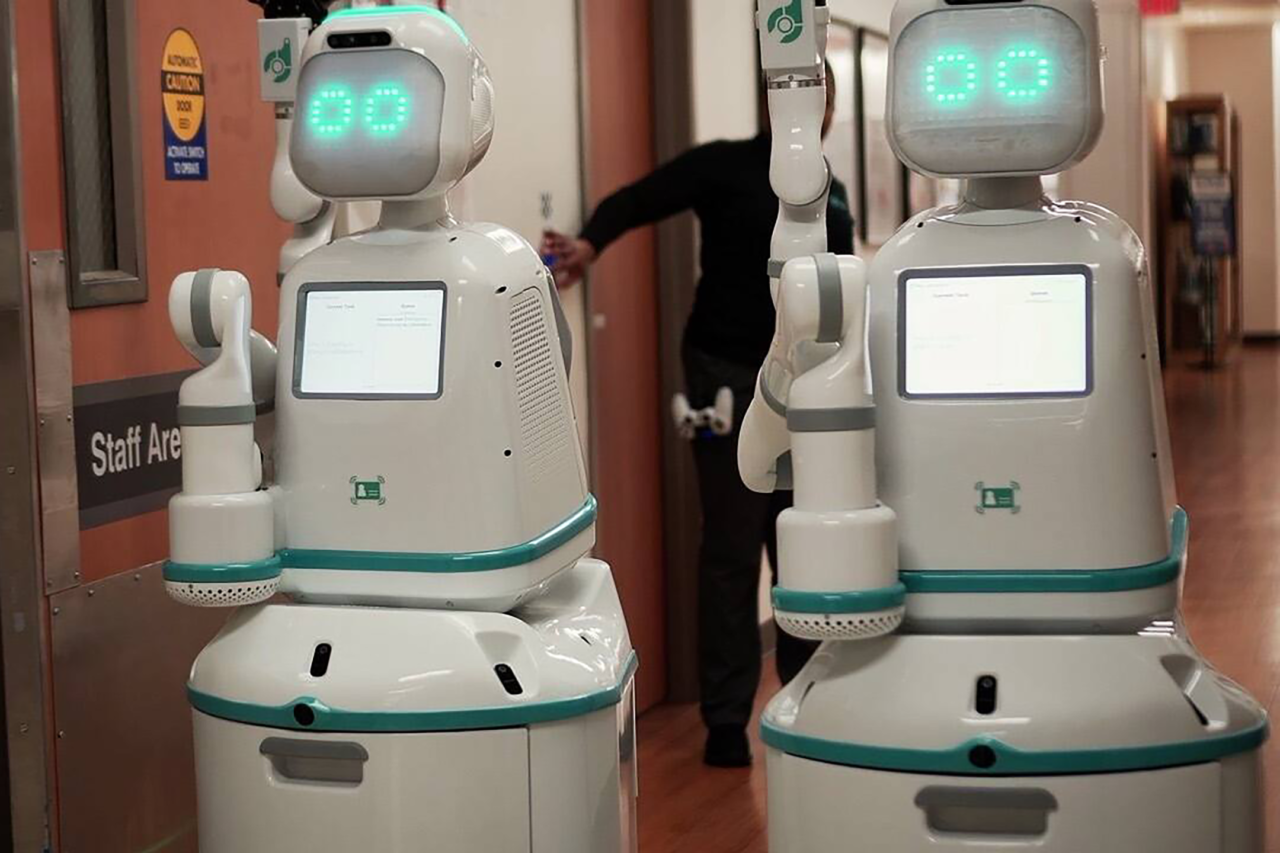The University of Texas Medical Branch welcomed some new staff members at the Angleton Danbury campus this week: two nearly life-sized robots programmed to support the human staff and free up nurses from certain tasks to allow them more time to spend with patients.
Nurses are consummate multitaskers who are focused on patient care. But what about the important but non-patient-facing tasks that take nurses away from patient care for what studies have shown to be about 30% of each shift?
Their dedication drives nurses to get it all done without compromising patient care and attention. But thanks to an innovative new solution, the hospital staff at ADC has some help.
Its name—for now—is Moxi.
Moxi is a fleet of two robots deployed at ADC to support nursing staff so it can focus on what it does best: patient care.
The implementation of Moxi at ADC is something campus leadership has been advocating for over the past few years, according to Dr. Beth Reimschissel, Administrator and Associate Chief Nursing & Patient Care Services Officer at ADC. The process of mapping out the facility and workflow revealed that staff members moved from department to department to deliver or retrieve something more than 300 times a day.
“We’re excited to introduce Moxi to help our hospital staff perform those time-consuming tasks that take them away from their patients,” Reimschissel said. “We have been on a mission to make our campus the place people want to work, knowing that we have so many team members that work and live in this community by choice. To match this commitment, our leadership has invested in technology and innovations such as Moxi to make their time at work less stressful and a place you can find state-of-the-art technology close to home.”
Given the age of the small ADC facility and its growth potential, Reimschissel explained, investing in innovation such as Moxi rather than a traditional tube system was a more sustainable solution.
Designed by Austin-based Diligent Robotics, Moxi is equipped with an arm, gripper hand and mobility that enable it to pick up lightweight medical resources, navigate hospital hallways and drop them off to nurses and other staff.
“We’re excited to see this project begin and to watch the implementation roll out at our latest hospital,” said Dr. Vivian Chu, co-founder of Diligent Robotics. “Nurses and clinical care teams get pulled in so many directions, and I love that we can integrate Moxi robots into the team to help relieve some of this stress.”
Using machine learning technology and an array of sensors, Moxi maps the hospital and uses its mechanized arm to navigate multiple types of doors, including those that require badge access. Through its mobile base, which contains three different sized and locked drawers, nurses can use Moxi to fetch supplies, deliver lab samples, pick up medicines from the pharmacy and other tasks.
The hospital has been hosting “meet and greets” with Moxi for school groups and is conducting a contest for staff to name the robotic pair.
Moxi’s core technical features include:
- Social intelligence: Moxi navigates elevators and opens doors on its own, won’t bump into people or objects in hallways and happily poses for selfies.
- Mobile manipulation: Moxi can interact with the hospital’s existing environment such as ADA doors and elevators to gain access across the entire facility without requiring a significant investment in infrastructure.
- Human-guided learning: The more the staff uses Moxi, the more Moxi learns and adapts to ADC’s environment and way of doing things.
Reimschissel pointed out that deploying Moxi at ADC created jobs within the community, as Diligent Robotics hired local staff to maintain the robots.
“Hearing that this added jobs to the Angleton community for those seeking a career in robotics was one of the biggest wins for this innovation,” she said. “We pride ourselves as a campus knowing that our growth has aided in the economic development of Brazoria County, and this adds to that. From creating new jobs in the community to freeing up nurses in their units, it’s just a win all around. And in the end, it’s the patients who will see the most benefits.”


